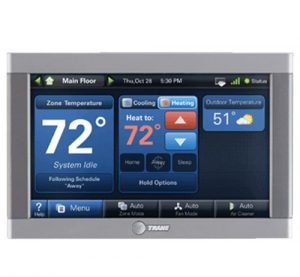If you’ve noticed strange chatter or whining noises from your plumbing, or if you’re water flow has slowed to a trickle, or the opposite and it is now rushing out, the problem may be your home’s Pressure Reducing Valve (PRV).
A pressure reducing valve, sometimes called a pressure regulator, is used to regulate your home’s water pressure. Many times, the incoming water pressure from the municipal water department can be excessively high. The use of a pressure reducing valve on the home’s incoming water main is the mandatory solution required by the National Plumbing Code. Over time, this valve can wear out and begin to malfunction. They can:
- Break and let all the water pressure through, instead of reducing it
- Start to make noises and chatter or whine as the valves struggles to stay closed
- Become clogged with sediment, reducing the water flow to a trickle
- Corrode and begin leaking as with any other water pipe, valve, or fitting
If your PRV has failed, replacing it promptly can save you hundreds or even thousands of dollars down the road:
- Excessive water pressure can damage the seals and valves in your faucets and toilets causing them to leak and waste water.
- Electronic valves, such as those in your dishwasher, icemaker, and clothes washer are prone to failure if pressures exceed design standards. These leaks can also go undetected for long periods of time due to the isolated location of the components, causing water damage to your home.
- Significant problems can also occur with your hot water heater and expansion tank. When the incoming pressure is too high, the protection provided by your expansion tank becomes ineffective. The resultant pressure build up in the water tank can wear out welded seams and the tank’s pressure relief valve. This is one of the most common causes of premature water tank failure.
If you suspect your PRV is letting too much pressure through, which is the most common problem, you can purchase a water pressure gauge and do a simple test to find out. These gauges are available at most hardware and plumbing supply stores, and are easy to use:
- Screw it onto to a threaded hose connection in your plumbing system, like a hose spigot or laundry valve
- Open the valve
- Read the gauge for the exact water pressure reading
- Turn off the valve and remove the gauge
A reading of 80 psi or higher may indicate excessive pressure, and the PRV may have to be adjusted or, if it has failed, replaced. In this case, a licensed plumber can help you determine the root problem, and provide you with the right solution.
You should also consider a Plumbing Maintenance and Inspection service from BelRed Energy Solutions . This service will provide you with a clear understanding of the condition of your home’s entire plumbing system, as well as valuable services like an enzymatic drain treatment, and water heater burner maintenance and tank flush.
For more information, or to schedule a Plumbing Maintenance and Inspection service , contact BelRed Energy Solutions today.







